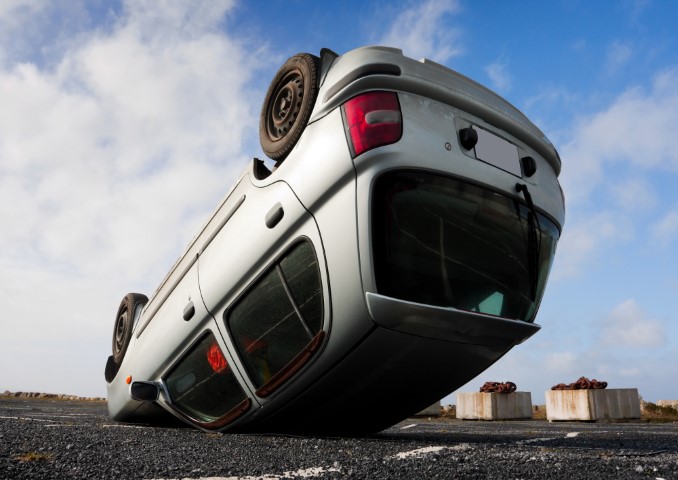
There are different types of car accidents, some of which can be more dangerous and lead to more severe injuries than others. One of the most serious types of car accident is a rollover accident.
Rollover accidents only account for about 3% of crashes on roadways, but they make up 30% of fatalities.
Any vehicle can rollover in certain circumstances, but these accidents are more common in pickups, vans, and SUVs.
The following are key things to know about a rollover accident.
What Happens During a Rollover Accident?
During a rollover accident, a vehicle either tips entirely on its side or falls completely over, becoming upside down. Some cars may roll several times before stopping.
A rollover accident can involve just one vehicle or multiple vehicles, and thousands of people lose their life, as a result each year.
There are two categories of these accidents.
There a tripped rollover, which makes up the vast majority.
A tripped rollover happens when a vehicle leaves the roadway. Then, something “trips” it causing it to roll over. That could be a median, guardrail, or maybe soft soil.
Untripped rollovers are much rarer. These happen when a vehicle is top-heavy and is trying to avoid something. For example, an untripped rollover can occur because of swerving to avoid hitting a vehicle.
Common Causes of Rollovers
Some of the frequent reasons for rollover accidents include:
- Distracted or impaired driver—this can mean the driver whose vehicle rolls over is impaired or distracted, or there another driver is. For example, another driver can veer into your lane and cause other drivers to swerve, contributing to a rollover.
- Speeding can lead to rollovers.
- Aggressive driving particularly including things like erratic lane switching, can be a rollover risk factor.
- The type of vehicle can mean a higher likelihood of rolling over, as has been touched on.
- If you have too much tire grip, it can be a cause of this type of accident as can not having enough tire grip.
- These accidents are more common on rural roads, and there is often only one lane per direction and higher speed limits.
- Curved roads and exit ramps are more often to be the site of a rollover.
- Wet and icy roads are risk factors.
Preventing or Surviving a Rollover
Many vehicle makers, and in particular SUV makers, have focused significant efforts on designing vehicles in a way that reduces the risk of rollover accidents. The death rates from these accidents have dropped in recent years.
The newer your vehicle often, the better it is in terms of safety, including a reduced risk of being in a rollover accident and if you are, a newer vehicle may provide more protection. Newer cars have updated safety features, which tend to improve every year.
Two features, in particular, relevant to rollover accidents, are electronic stability control and side curtain airbags.
Wearing your seatbelt at all times can reduce injuries or the risk of death if you’re in a rollover crash. Around half of deaths related to these accidents occur when people are partially or entirely ejected from the vehicle.
You should be careful never to overload your vehicle because that decreases stability, and you should check your tires regularly to make sure they’re in good shape.
Choose vehicles that are lower to the ground if possible, and always watch your speed no matter what. Slow down if you’re approaching a curve in the road, be cautious of rural roads, and provide enough space between you and the vehicles in front of you.
Common Injuries
Any type of injury can stem from a rollover accident, but some of the more common include:
- Traumatic brain injuries. When you’re in an accident, and your vehicle’s wheels stop but the rest of the car keeps going, it can mean that you’re more likely to hit your head on different parts of the car.
- Spinal injuries. Spinal injuries occur in these cases because there’s so much sudden movement.
- Internal bleeding. There’s the impact of these crashes that is so significant it can lead to trauma and harm to the internal organs.
- Broken bones. These may include broken ribs, arms, and legs.
- There is a lot of trauma stemming from a rollover accident that can lead to death.
To avoid rollovers, be cautious about the vehicle you choose to drive, make sure your tires are in good shape, avoid overloading your vehicle, and always drive safely.










